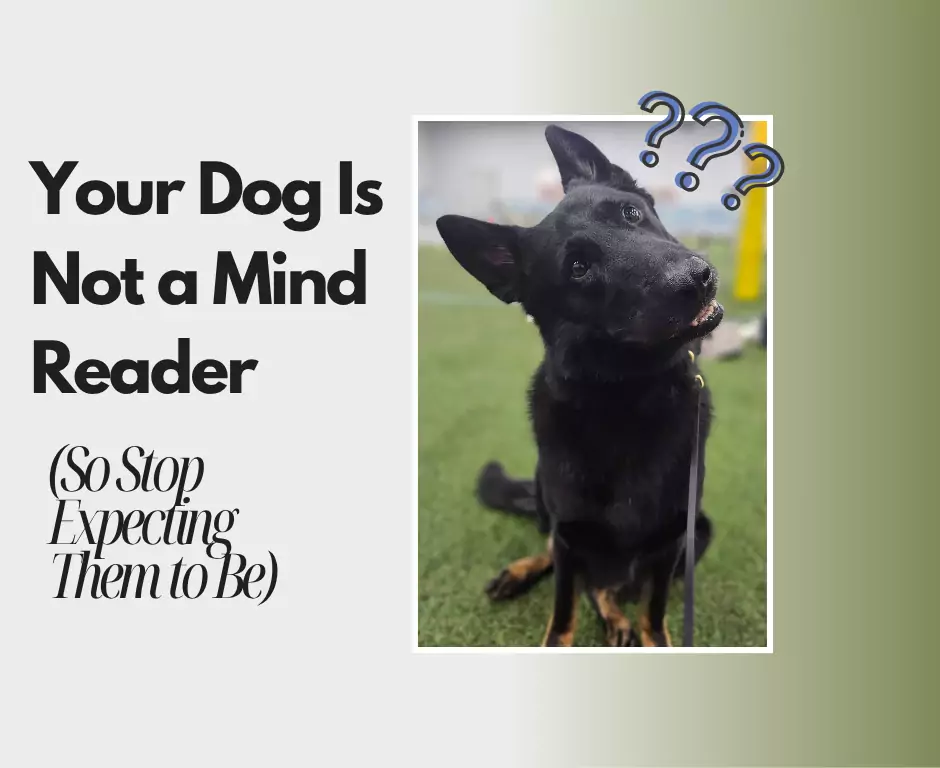Your Dog Is Not a Mind Reader (So Stop Expecting Them to Be)
September 28, 2025

I hear this all the time:
“He knows better.”
“She’s just being stubborn.”
“I shouldn’t have to keep telling him.”
But here’s the truth: dogs don’t do what we want. They do what we’ve taught and what they’ve been allowed to rehearse.
They’re not trying to frustrate you. They’re trying to figure out what works. And if the rules change based on your mood or the day of the week, your dog will stay confused and inconsistent.
Dogs thrive on clarity
Dogs don’t speak English. They learn patterns. Associations. Consequences.
When things are clear, dogs flourish. When things are murky, they guess and usually guess wrong.
Your job as the handler is to give consistent, simple, black-and-white feedback.
“Do this and good things happen.”
“Do that and nope, not allowed.”
It’s not robotic. It’s reliable.
The damage of assuming too much
When we assume our dogs “know better,” we start skipping steps:
We get lazy with follow-through.
We overestimate what they’re ready for.
We correct without making sure the dog even understood the task.
That’s not leadership. That’s unfair.
A dog who sits in the kitchen may not sit in the yard. A dog who heels in the backyard might lunge at squirrels on the sidewalk. And a dog who comes when called, unless they’re chasing a deer, doesn’t really know recall.
It’s not because they’re being defiant. It’s because we skipped the reps that matter.
Ask yourself: have I taught this or just assumed it?
Every time your dog “blows you off,” ask:
Did I clearly teach this behavior in this context?
Have I proofed it under distractions?
Did I make the expectation crystal clear?
Have I consistently corrected non-compliance?
If the answer to any of those is no, it’s not the dog’s fault.
That’s not blame, it’s a responsibility check.
Clarity doesn’t mean being harsh
This isn’t about being strict for the sake of it. It’s about being honest and consistent.
A dog who knows exactly where the line is can relax. They don’t have to guess. They don’t have to test. They know what works.
And when your feedback is predictable, your dog will start making better choices on their own.
What this looks like in real life
Let’s say you’re teaching “place.”
You guide the dog on, reward them for staying, and release them when you choose.
Here’s where most people mess it up:
They release the dog after it breaks, instead of before.
They let the dog hover off the mat with no consequence.
They expect a 10-minute hold when the dog’s never done more than 30 seconds.
That’s not training, that’s hoping.
Want your dog to succeed? Be clear. Be fair. Be consistent.
Final thought: assume less, teach more
If your dog isn’t listening, assume they need more reps. More structure. More clarity.
Don’t fall into the trap of assigning human motives to dog behavior. They’re not being manipulative. They’re not being spiteful. They’re confused.
Your job is to teach. Their job is to learn.If everyone sticks to their role, the results speak for themselves.